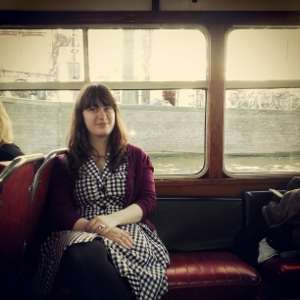The theme of tonight was La Douce France, with a line-up of French and Belgian musicians and composers. Starting off with the subtle tones of Claude Debussy’s Prélude à l’après-midi d’un faune, a symphonic poem inspired by Mallarmé’s poem “L’Après-midi d’un Faune”. Even if you would not be aware of the title, the image of a faun would rise up from the music, the flute and harp especially created exciting faun-like music. The entire piece is full of ripples of excitement and almost off-beat harmonics. Several historians of music have stated that “modern” music started with this piece, and one can imagine why. It is a beautiful and calming piece to listen to, yet there are some things happening that may not make sense at first listen, and I would certainly argue that this is a good thing, because it makes the work very idiosyncratic and enticing.
All violin pieces by Saint-Saëns that I have heard have a very particular sound to them, there is something rather dirty about the sound of violins playing his pieces and this somehow makes it for me incredibly emotionally charged. And so, before seeing his Third Violin Concerto, written in 1880, I was a bit worried that the violinist might play too safe (or clean) and make the concerto dull. Luckily, the very hip-looking Yossif Ivanov did a beautiful job. The piece is itself is wonderful, with dialogues between the violin and clarinet, and the violin often-times echoing sounds played in the orchestra and vice versa. The second movement contains one of Saint-Saëns most beautiful recurring themes, played especially powerfully by Ivanov. The third and last movement was particularly good, with both the orchestra and soloist letting go a bit and creating an exhilarating ending to this concerto.
César Franck only wrote one symphony, but he is one of those rare composers that didn’t need a second try, his first and only symphony is fantastic. First performed in 1889 to mixed reviews, it has since remained a staple in the concert halls. And with good reason! The symphony contains three movements with the last one being a true finale: many themes coming together and creating something new yet familiar. The Allegro of the first movement contains one of the catchiest and powerful moments in the symphony, a theme that will return both later in the first movement and in the last. For me, the second movement of the symphony, though much more subdued, is especially beautiful, starting with strings being plucked and wonderful themes being played by the woodwind section, who were incredible this evening. The final movement is much more up-tempo and upbeat, culminating in an awe-inspiring finale. The following applause was one of the most enthusiastic ones I have ever witnessed, illustrating both the power of the pieces played and the skills of the musicians of the Orchestra Philharmonique Royal de Liège.


